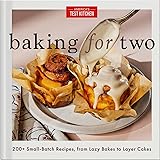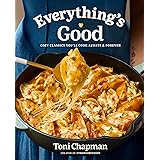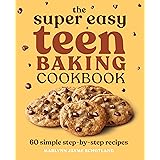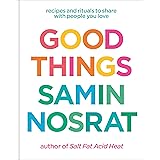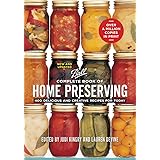Are you ready to transform your plant-based kitchen experience? The journey into homemade almond milk offers unparalleled freshness. It provides a level of control over ingredients store-bought options simply cannot match. Crafting your own almond milk is a foundational skill for any discerning vegan chef. It also delivers superior taste and texture. This simple process unlocks a world of culinary possibilities. It elevates your daily beverages and recipes alike.
Making almond milk at home gives you complete autonomy. You select the quality of your raw almonds. You control the water source and any desired sweeteners. This meticulous attention ensures a purer product. It lacks artificial additives or unwanted gums. The result is a vibrant, creamy beverage. It stands as a testament to mindful ingredient sourcing. Embrace this artisanal approach to plant-based living.
Mastering the Art of Homemade Almond Milk
The video above showcases the essential steps for crafting your own vegan almond milk. It highlights the simplicity of the process. It is a fundamental skill in plant-based cooking. This method ensures maximum nutritional integrity. It also guarantees a superior flavor profile. Understanding each stage enhances your final product. Let us delve deeper into these critical steps.
The Crucial Role of Almond Soaking
Soaking almonds is not merely a preparatory step. It is a vital enzymatic activation process. Raw almonds contain phytic acid and enzyme inhibitors. These compounds can hinder nutrient absorption. Soaking neutralizes these antinutrients effectively. It unlocks the full spectrum of almond’s inherent goodness. Think of it as waking the dormant nut. This makes it more digestible and bioavailable.
The recommended soaking time is overnight, or up to 24 hours. This duration softens the almonds significantly. It loosens their skins for easier removal, though not strictly necessary. Soaked almonds also blend into a smoother, creamier emulsion. This process transforms a hard nut. It becomes a supple ingredient, ready for transformation. This small step yields substantial dividends in quality.
The Alchemy of Blending for Nut Milk
Once your almonds are adequately hydrated, blending is the next stage. This mechanical process ruptures the cell walls of the almonds. It releases their rich fats, proteins, and micronutrients. The video suggests a ratio of one cup soaked almonds to four cups water. This ratio creates a beautifully balanced milk. It offers both creaminess and pourability. Consider this a golden standard.
A high-speed blender is your best ally here. It ensures a finely pulverized mixture. This minimizes residual pulp and maximizes milk yield. Blend for at least one minute, as demonstrated. This extended blending time creates a stable emulsion. It prevents rapid separation later. Imagine it as a powerful vortex. It transforms solid nuts into a milky elixir.
Extracting the Nectar: Straining Your Almond Milk
The final step in primary almond milk production is straining. This separates the liquid milk from the fibrous almond pulp. A nut-milk bag is the preferred tool for this task. Its fine mesh captures even the smallest particles. This ensures a silky-smooth texture. Pour the blended mixture into the bag. Then, gently but firmly squeeze the liquid through.
Applying steady pressure is key here. It extracts every last drop of the luscious plant-based milk. Be patient and thorough in this process. The remaining almond pulp is a valuable byproduct. Do not discard it casually. It holds culinary potential for other creations. Think of straining as clarifying a precious liquid. It refines it to its purest form.
Elevating Your Almond Milk: Sweet Vanilla Perfection
The raw almond milk is delicious on its own. However, enhancing it with natural sweeteners and flavorings is a delightful option. The video demonstrates creating a sweet vanilla almond milk. This transformation is surprisingly simple. It adds a layer of complexity and indulgence. This customization elevates your homemade beverage experience. It allows for creative culinary expression.
The Sweetness of Medjool Dates
Medjool dates are nature’s candy. They are a perfect sweetener for dairy-free milk. Their rich, caramel-like flavor complements almonds beautifully. The video uses three pitted Medjool dates for one cup of raw almond milk. This provides a balanced sweetness. It is not overly cloying. Dates also contribute fiber and essential minerals. They offer more than just sugar.
Blending dates directly into the milk ensures even distribution. Their soft, chewy texture integrates seamlessly. They dissolve into the liquid. This creates a homogeneous, sweet infusion. Medjool dates are like a hidden treasure. They imbue the milk with natural warmth. This transforms plain milk into a gourmet treat. Their unique taste adds depth.
The Aromatic Embrace of Vanilla Extract
Vanilla extract adds an unparalleled aromatic dimension. A single teaspoon, as shown, enhances the overall profile. Organic vanilla extract delivers the purest essence. It avoids artificial flavors or colors. This seemingly small addition creates a significant impact. It rounds out the sweetness of the dates.
Vanilla acts as a flavor amplifier. It deepens the inherent almond notes. It lends a comforting, familiar fragrance. This makes the milk irresistibly inviting. Blend the vanilla and dates for about half a minute. This ensures everything is thoroughly incorporated. Vanilla is the silent orchestrator. It harmonizes all the flavors. This creates a symphony on your palate.
Beyond the Basics: Advanced Tips for Your Nut Milk Journey
Crafting homemade almond milk is a starting point. There are myriad ways to refine your technique. You can also diversify your creations. Consider these expert insights. They will elevate your nut milk game. These pro tips extend the versatility of your kitchen. They help you explore new flavor horizons.
Optimizing Your Almond Choice and Preparation
Source high-quality, raw almonds. Organic is often preferred for purity. Ensure they are unroasted and unsalted. These conditions maintain their raw enzyme integrity. This supports optimal nutrient release during soaking. Think of almonds as tiny powerhouses. Their quality directly impacts your milk.
The soaking water should be pure, filtered water. Change the water halfway through a 24-hour soak. This prevents bacterial growth. It also helps to rinse away enzyme inhibitors. A pinch of sea salt in the soak water can also enhance flavor. It is like seasoning before cooking. This small addition makes a difference.
The Multifaceted Uses for Almond Pulp
The leftover almond pulp is far from waste. It is a versatile ingredient. This fibrous material can be dehydrated. You can then grind it into a fine almond flour. This flour is excellent for gluten-free baking. It adds moisture and nutty flavor to crackers. Consider it for energy balls or raw desserts. The pulp has a second life.
Beyond baking, almond pulp works wonders in savory dishes. Mix it into veggie burgers for added texture. Incorporate it into pestos or dips. You can even use it in face masks for exfoliation. This commitment to zero waste aligns with conscious living. The pulp is a testament to sustainable cooking practices.
Creative Flavor Pairings and Spices
Do not limit yourself to vanilla. Experiment with other extracts. Almond extract can intensify the almond flavor. A dash of cinnamon or nutmeg adds warmth. Cardamom brings an exotic, fragrant twist. A pinch of sea salt can also balance sweetness. It enhances overall flavor perception.
For a chocolate version, add cocoa powder or raw cacao. Consider a hint of orange zest for brightness. A few drops of peppermint extract create a festive treat. These additions transform your basic almond milk. They become seasonal delights or special occasion beverages. Your homemade nut milk is a blank canvas.
Storage and Shelf Life of Your Fresh Almond Milk
Homemade almond milk, being free of preservatives, has a shorter shelf life. The video correctly states it stores for 3-4 days. Always keep it in a sealed container. Refrigeration is essential for freshness. A glass bottle or jar with a tight-fitting lid works best. This prevents absorption of refrigerator odors.
Label your container with the creation date. This helps you track its freshness. You might notice some natural separation over time. This is completely normal and expected. Simply shake the container gently before serving. Treating your almond milk recipe like fresh dairy ensures optimal enjoyment. Its fleeting freshness is part of its charm.


